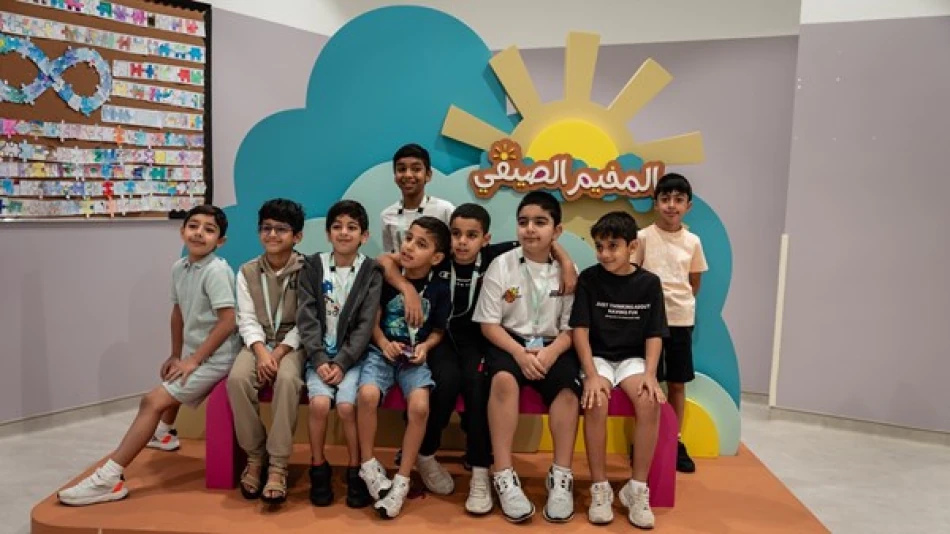
Dubai's Farjaan Festivities: A Summer Celebration of Culture and Entertainment
Dubai's Community Initiative Engages 870+ Residents in Ambitious Summer Program
Dubai's neighborhood development initiative "Farjan Dubai" is demonstrating how strategic community engagement can transform residential areas into vibrant social hubs. With over 870 participants across multiple programs, the organization's 2025 summer activities showcase a comprehensive approach to community building that other cities could replicate as urban populations seek stronger local connections.
Multi-Tiered Programming Targets Different Demographics
The initiative's success lies in its diversified approach. The third season of the "Summer Camp 2025" has attracted more than 620 children, while "Farjan Club" activities in Al Barsha, Al Twar, and Al Warqa neighborhoods engage approximately 250 participants. This multi-location strategy ensures accessibility and prevents over-concentration in single areas.
According to Alia Al Shamlan, Director of Farjan Dubai, the program's continuous success reflects the positive community spirit the organization aims to establish. The diversity of programs addresses various demographic needs while creating a dynamic community environment.
Skills Development Through Four Core Pillars
The summer camp, running until July 24, operates on four strategic pillars: security awareness, cultural heritage, "Little Heroes of Dubai," and future skills development. This framework suggests Dubai's approach to youth development emphasizes both traditional values and forward-looking competencies—a balance many cities struggle to achieve.
The program benefits from Emirati expertise and strategically located venues near participants' residences, reducing barriers to participation that often plague community initiatives.
Sports Development Through Strategic Partnerships
The "Farjan Football Club" training program, launched on June 24 and continuing until September 30, demonstrates how public-private partnerships can enhance community offerings. The collaboration with "Hattrick Academy" targets children born between 2009 and 2019 across three Dubai schools.
This sports-focused initiative reflects Dubai's broader strategy of nurturing athletic talent within community frameworks, potentially feeding into the emirate's growing sports tourism and professional athletics sectors.
Large-Scale Social Responsibility Campaign
Perhaps most ambitious is the second edition of the "Fridge of the Neighborhood" campaign, a collaboration with Mohammed bin Rashid Al Maktoum Global Initiatives, supported by Saqia Emirates and Emirates Food Bank. The initiative aims to distribute two million bottles of water, juices, and frozen treats to workers across Dubai through August 23.
Mobile Distribution Strategy
The campaign employs both mobile refrigerated vehicles and fixed refrigerators in worker accommodations, creating a comprehensive distribution network. This dual approach addresses the logistical challenges of reaching Dubai's diverse workforce while engaging volunteers from various community segments.
The initiative reflects Dubai's recognition that community building must include all residents, not just families and children, acknowledging the essential role of the emirate's large expatriate workforce.
Implications for Urban Community Development
Farjan Dubai's approach offers insights for other rapidly growing cities facing similar community cohesion challenges. The organization's emphasis on neighborhood-level programming, combined with emirate-wide initiatives, suggests that effective community building requires both local accessibility and broader institutional support.
The program's success—measured by consistent high participation rates and expansion across multiple neighborhoods—indicates that residents in cosmopolitan cities like Dubai are eager for authentic community connections despite busy urban lifestyles.
As Dubai continues positioning itself as a global city, initiatives like Farjan Dubai demonstrate how urban development can prioritize social cohesion alongside economic growth, potentially serving as a model for other Gulf cities experiencing similar demographic and urban expansion pressures.
Most Viewed News

 Layla Al Mansoori
Layla Al Mansoori






